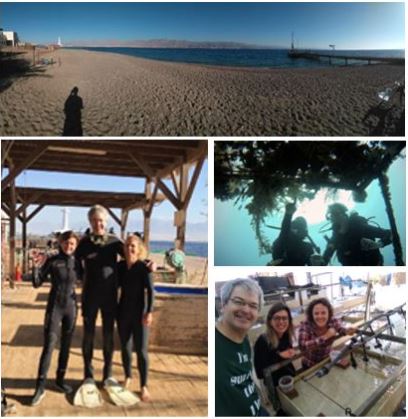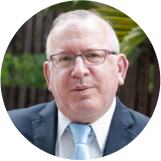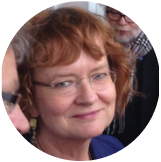Home | Stories & News | Post

- June 6, 2021
Corals and Teeth - Research for Bio-Inspired Materials
From Prof. Tali Mass (University of Haifa) & Prof. Paul Zaslansky (Charité University Hospital Berlin)
Everyone knows that corals don’t have teeth. Many know that Berlin has no sea. Still, the science behind mineral structuring and biomineralization holds for both coral and teeth, and is the basis for an exciting, unexpected collaboration between the dental school in Berlin and the school of marine sciences in Haifa.
Tali Mass is a marine biologist working on biomineralization mechanism in corals while Paul Zaslansky, a dentist-materials scientist – focuses on applying advanced materials characterization methods to teeth. We had multiple conversations on applying structural analysis in our diverse fields of studies.
In 2018, aided by GIF Young Scientist Grant, Tali visited Paul’s lab in Berlin. Despite the unlikely setting in a dental clinic and school, the visit rapidly led to sketching a range of studies and joint research questions, which opened the way for a long-term collaboration and friendship. Paul recalls a joint dinner, where Tali shared hints for easier ways for making top-class home-made hummus, prevalent in Israel but expensive and unimpressive in shops in Berlin. Scientifically, that visit led to two joint papers on morphological changes of corals in extreme environments. It also resulted in a joint materials science application and an award of a joint GIF grant at a time of immense grant uncertainty.
In the new project we examine structure-property relations of the Antipatharians, commonly known as black corals. Unlike stony corals, these creatures have flexible seemingly soft skeletons but they are extremely strong and able to withstand harsh living environments up to 2000 m deep. In this research we combine materials characterization expertise with ecological and biological expertise to understand the resilience and strength of the corals, while mapping fundamental information about the habitats of these ancient creatures. In December 2019 we initiated the project with a visit of Paul to the field laboratory in Eilat. Both teams traveled for 6 hours (some by car, some by direct flight from Berlin) during which the Haifa team hosted Paul in the labs and in underwater dives with Tali and her student. Observing the Antipatharia in its natural habitat, as well as the underwater and overwater surroundings, was the most perfect setting for a project kickoff.
The Covid19 pandemic cast heavy clouds on the ability of team members to directly interact. Heavy restrictions resulted in the inability to travel in either direction, though luckily regular online contact, as well as joint experiment planning and sample preparation did not grind to a halt. Synergistically, teams both in Israel and in Germany worked creatively to complete the first year of field and lab work and keep the project on track. In Israel Tali and her team completed the sample collection and characterization of the black coral at its nature habitat. In Germany, Paul and his team conducted electron and X-ray synchrotron experiments in the labs of the Helmholtz-Zentrum-Berlin (HZB), which were otherwise totally blocked for international travelers. However, excellent samples prepared by the Israeli team, and regular Zoom interactions yielded exciting, productive ‘mail-in’ experiments, much to the delight of the PI’s and the HZB leadership, all eager to move on with the science.
Related Posts
Dinner Discussion “Breaking Barriers: Bridging Science, Business, and Politics” at the Hermann Ehlers Academy in Kiel
On Thursday, July 4, the Hermann Ehlers Stiftung & Akademie hosted a dinner discussion entitled...
READ MORE »Luncheon with the German Federal Minister of Education and Research on the occasion of the German Studies Conference 2024
On Thursday, June 27, 2024, GIF director, Dr. Eric Zimmerman, had the great honor to...
READ MORE »2023/2024 Sylke Tempel Fellowship: Security Policies in Flux – New Perspectives on Israel and the Middle East
On June 20, 2024, GIF Director, Dr. Eric Zimmerman, was invited to the concluding event...
READ MORE »















